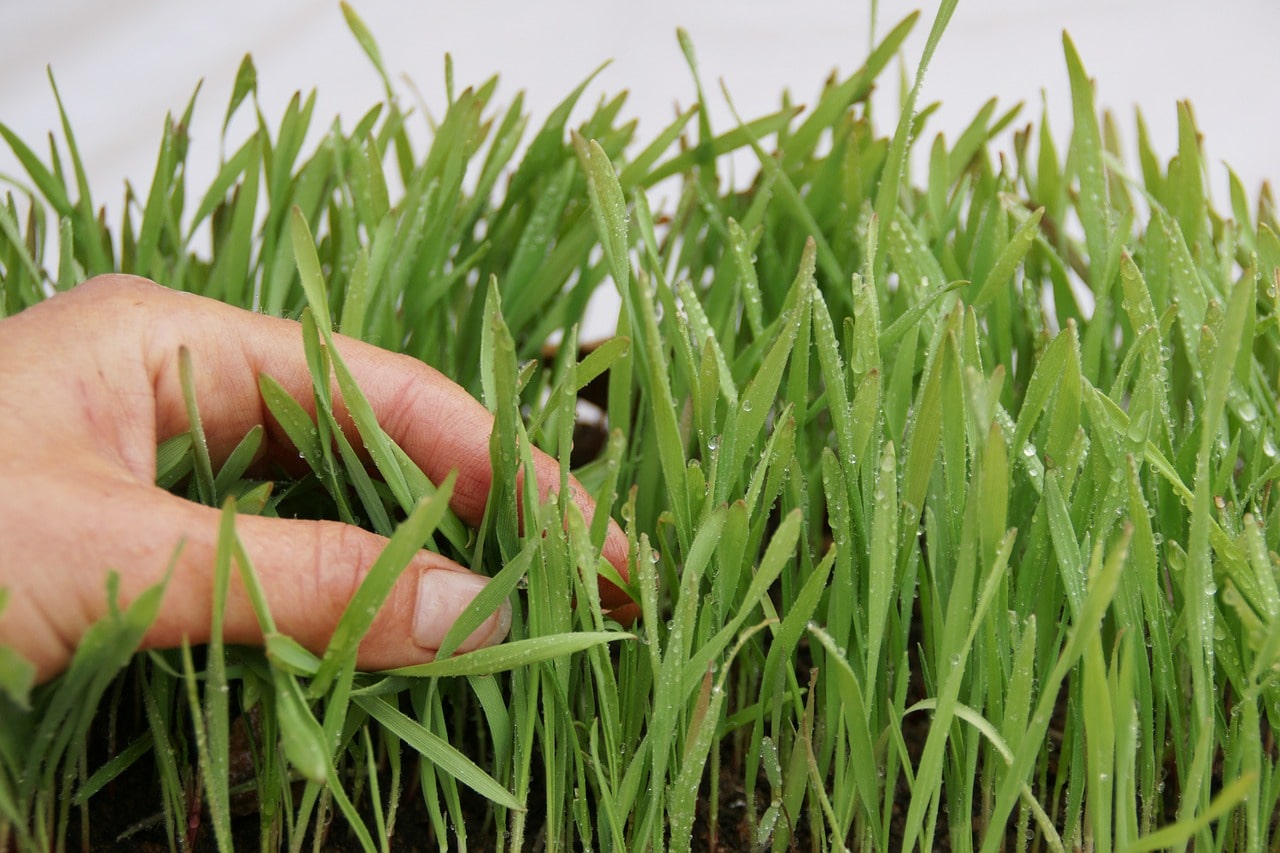Did you know that learning how to grow wheatgrass hydroponically only takes two steps? This method of growing wheatgrass is DIY-friendly and certainly newbie-friendly. Hydroponics is an excellent innovation for gardeners because it is cheaper and saves more space than growing in soil, so it’s not surprising that gardeners adapted this method for wheatgrass.
Wheatgrass has many health benefits because of its antioxidants, vitamins, and minerals. Did you know that wheatgrass juice is one of the best drinks you can have to prevent cancer potentially? You can even grow it in the greenhouse, much like ornamental grasses.

Indeed, wheatgrass is a healthy crop worth cultivating yourself. You can have your very own source of fresh and cancer-preventing juice in the comfort of your backyard. And best of all, growing wheatgrass is without fuss from an easy DIY hydroponic system.
How To Grow Wheatgrass Hydroponically: Two-Step Guide
Prepare the seeds
For a DIY hydroponic set-up, you need to prepare and sprout the wheatgrass seeds first. This is similar to how you’ll grow wheatgrass traditionally. To do so, rinse the seeds before putting them in a container, such as a quart-size jar.
Next is to submerge the seeds in the jar using purified water. Cover the container with the screen but remember to leave around 2 inches of the material so you can pull the edges down the jar mouth. Secure the cover with a rubber band and store it in a room at 65 to 75°F.
The seeds should soak for 12 hours before draining the water in the jar to help them sprout. Then, add purified water and shake the container gently to rinse the seeds. Drain and repeat the process to thoroughly clean the seeds.
Put in container
Once you’ve cleaned the wheatgrass seeds thoroughly, spread them equally at the bottom of a grow tray. Add water to cover them, then cover the container itself with paper to make it warm and dark. This will encourage growth later on, and you can maintain moisture by soaking the paper cover.
Another method is to let the seeds sprout on their own in the hydroponic system for 24 hours. This is because growers noted how wheatgrass would need additional nutrients, and water alone won’t suffice. Therefore, it’s common to combine a hydroponic medium with kelp fertilizer or sphagnum peat moss.
Add an inch of growing media at the bottom of the tray before misting both seeds and media with water. However, be careful not to oversaturate them before storing the container in a warm and dark place. The wheatgrass should sprout on day four, and you can wait until they are an inch tall before placing them in a sunny location.
Using a greenhouse is ideal for hydroponic wheatgrass because the indoor conditions prevent mold growth. After ten days, the grasses should be around 10 inches tall and ready for harvest. Just make sure you’re cutting as close to the growing surface as possible.
Advantages Of Growing Wheatgrass Hydroponically
Growing wheatgrass hydroponically is a sustainable and comfortable method compared to growing in soil. This is because you’ll be reaping quality wheatgrass while avoiding the problems and limitations with soil cultivation. If you’re planning on using a greenhouse, hydroponics is also your ideal partner.
If you think about it, growing wheatgrass hydroponically is more attractive since you’ll be consuming grass. After all, who would want soil and potential pathogens on their plate? In hydroponic wheatgrass, you’ll usually use coco coir, free of pathogens, odors, and possible mold problems.
However, you might still be confused about why this article discussed the importance of not using plain water with hydroponic wheatgrass.
Nutrient Requirements Of Wheatgrass
Some gardeners are adamant about growing wheatgrass hydroponically, thinking whether wheatgrass can still get their nutrient requirements and provide us with health benefits. Therefore, it’s useful to learn the macronutrients and micronutrients that wheatgrass needs.
Like most plants, wheatgrass loves nitrogen, potassium, and phosphorus. If you use coco coir for your hydroponic system, you shouldn’t have any deficiencies in these macronutrients. But because it is naturally low in nitrogen and phosphorus, it’s reasonable to add some coffee grounds for nitrogen and phosphorus.
Micronutrients are not that easy to achieve hydroponically compared to using soil. Therefore, supplementation with fertilizer is better to ensure that your wheatgrass gets its needs. A fine example of fertilizer to provide micronutrients is liquid kelp, and you’ll just add it to the initial water bath of your system.
Conclusion
Wheatgrass is a nutritional powerhouse that you can grow comfortably. If you know how to grow wheatgrass hydroponically, you can even avoid the drawbacks in space and pathogens common with soil cultivation. You only need to sprout the wheatgrass and use the appropriate growing medium for the hydroponic system.
The most common one is coco coir, and it’s best to add liquid kelp to ensure that the system provides the nutrient requirements for your wheatgrass. Speaking of which, it’s more viable not to use plain water in the system. Instead, add sphagnum peat moss in the hydroponic medium.
Another useful tip for hydroponic wheatgrass is the use of a greenhouse. This way, you can prevent mold growth and maintain the ideal conditions to support germination growth. Wheatgrass should be ready when they are 10 inches tall.
